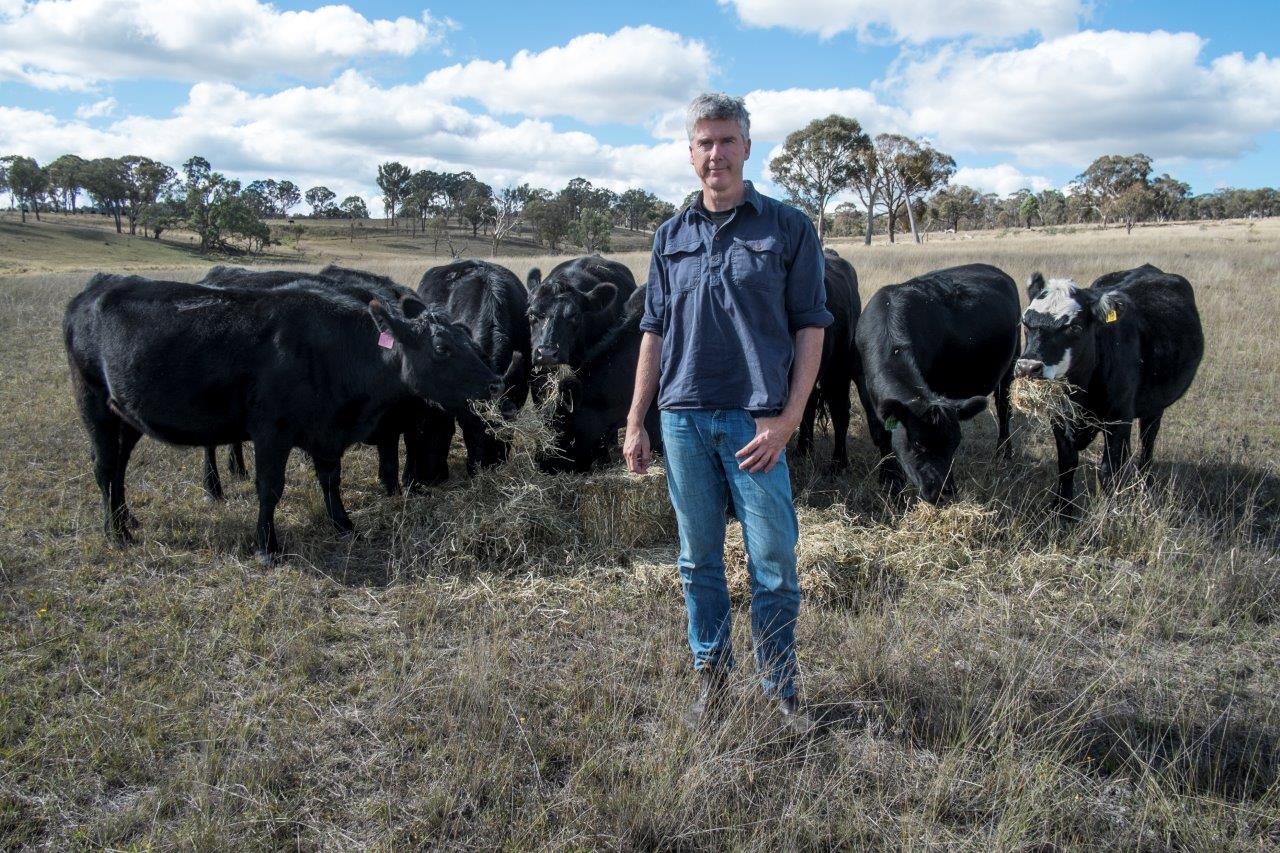I’ve spent a lot of time lately talking to people about meat. About how much they eat (in Australia = a LOT) about how it’s produced, about better ways to do things.

As a meat lover who used to be a vegetarian, but now having made a conscious decision to eat meat, I wanted to know how guilt-free my meat eating could be. And the impacts of eating meat soon boiled down to three broad categories and questions: What is the impact of Australia’s nearly world-leading carnivory on human health, on the animals we eat, and on the environment?
I asked almost every person I met from the general public about what they considered the most important of these three. And the results? Human health, followed by animal welfare. Then… nothing. A long time nothing. Then, eventually, a few souls favoured knowing the impact on the environment. And yet agriculture and meat production, in particular, have a really large environmental footprint. Some say 20 percent of all carbon emissions. Some say a lot less, or a bit more. But regardless, it’s a big issue.
Measuring actual environmental impacts of meat production is fraught. Consider the oft-quoted figure of 16,000 litres of water to produce a kilo of beef. It relates to irrigated land for grain-fed cattle in the US but is trotted out like some kind of firm fact in Australia virtually every second day. And some modelling uses rainfall that will land on the ground anyway, regardless of whether it falls on grass, on forests, or on wheat.
But what is sure is that ruminants punch above their weight in their carbon footprint. To produce beef, you have an impact that’s 25 times more potent, per kilo, than to produce a kilo of lentils (yet, there is a lot more protein in meat than in the same volume of lentils). Unfettered farming of ruminants, in a global perspective, probably isn’t a great thing.
And yet, ruminants, a group of animals such as sheep, cattle, deer and goats, these animals with their four stomachs, are adept at something we’re not: turning grass into fuel. That fuel, from a human nutrition perspective, is the much sought-after high-quality protein. The very thing in a ruminant that produces methane (a greenhouse gas with more potent climate change impacts than carbon dioxide), its stomach, is the miracle worker that can digest the cellulose in grass. The bacteria that break down the cellulose are the things that produce methane. Because grass grows in places that can be nigh on impossible to plant crops, being able to turn grass into food for humans is, oftentimes, a pretty handy thing. Hence, beef, lamb and goat can be a food source from land otherwise useless or inefficient at producing anything else we want to eat.
The thing to remember, for those who do like a bit of meat, is that environmental impacts are felt from all activity. It’s whether those activities are sustainable or not that is the issue. Some small-scale meat eating, including of ruminants, is okay, depending on the farming system. And new research from the CSIRO is looking at supplementing the diet of cattle with algae – seaweed – which, in trial phases, reduced methane by up to 85%. A great win for the environment.
However, we could do heaps better than our current penchant for land clearing to produce cattle. We could certainly reduce the runoff from grazing land onto the Great Barrier Reef and manage cattle in a way that sequesters more carbon in the soil.
The three factors – human health, animal welfare and the environment – are interconnected, not isolated, and it’s up to each individual to work out where they sit on the spectrum. Some choose to be vegan. Some vegetarian. Some only eat meat they are sure of the provenance of. Others want to eat meat in a way that they feel produces minimal harm.
In purely environmental terms, eating fast-growing, intensively-farmed chicken is less harmful than eating beef and lamb. Even pork. But I don’t think you can think of meat’s environmental impact separately from its impact on health and animal welfare. I think we can be moderate in our diet, consider all the factors, and still eat ruminants.
We can do this by balancing our meat consumption across several species, by eating ethically-sourced seafood, and by adding more vegetables, legumes, grains and fruit to our diet. After all, the world’s greatest cuisines eat less meat than Australians and still eat really well.
And sometimes, just don’t eat meat. Plain and simple. Have meals that don’t have any meat, and you can still easily meet your dietary needs, and save up your meat eating for a bigger meat fix less often, if that is the kind of meat eating you relish.
Treat meat like an indulgence. It does cost the earth more. It does involve taking the life of a sentient being. But it is an amazingly dense, high-quality protein, which tastes terrific. Honour the animal, and the meat that it provides.
All it takes is a little more thought about what we eat, why we eat it, and what the impacts are. It’s the good decisions we make when we have the time, the budget, the circumstance (and the will) that can make a difference. It’s the better choices that we make that will help make the world a fairer, gentler place. Don’t beat yourself up for the things that you can’t change. Just be happy for the things you can do to help your health, the life of our animals, and the planet.
Matthew Evans is a food writer, TV host and former food critic turned Tasmanian smallholder. His latest program on being a conscious carnivore, For the Love of Meat, is currently on SBS on Thursdays.
[optin-monster-shortcode id=”otqych14puziexp59ygq”]


